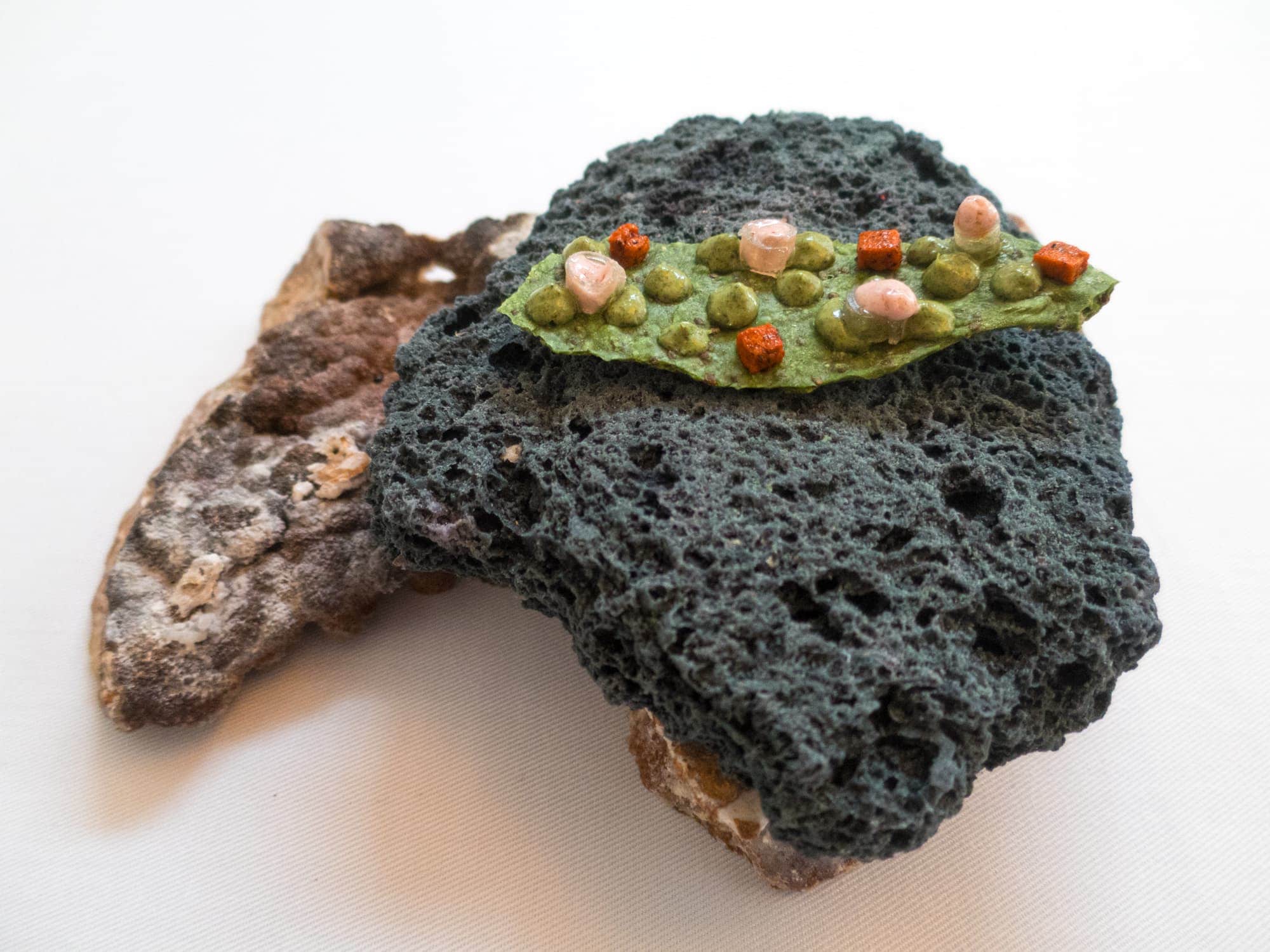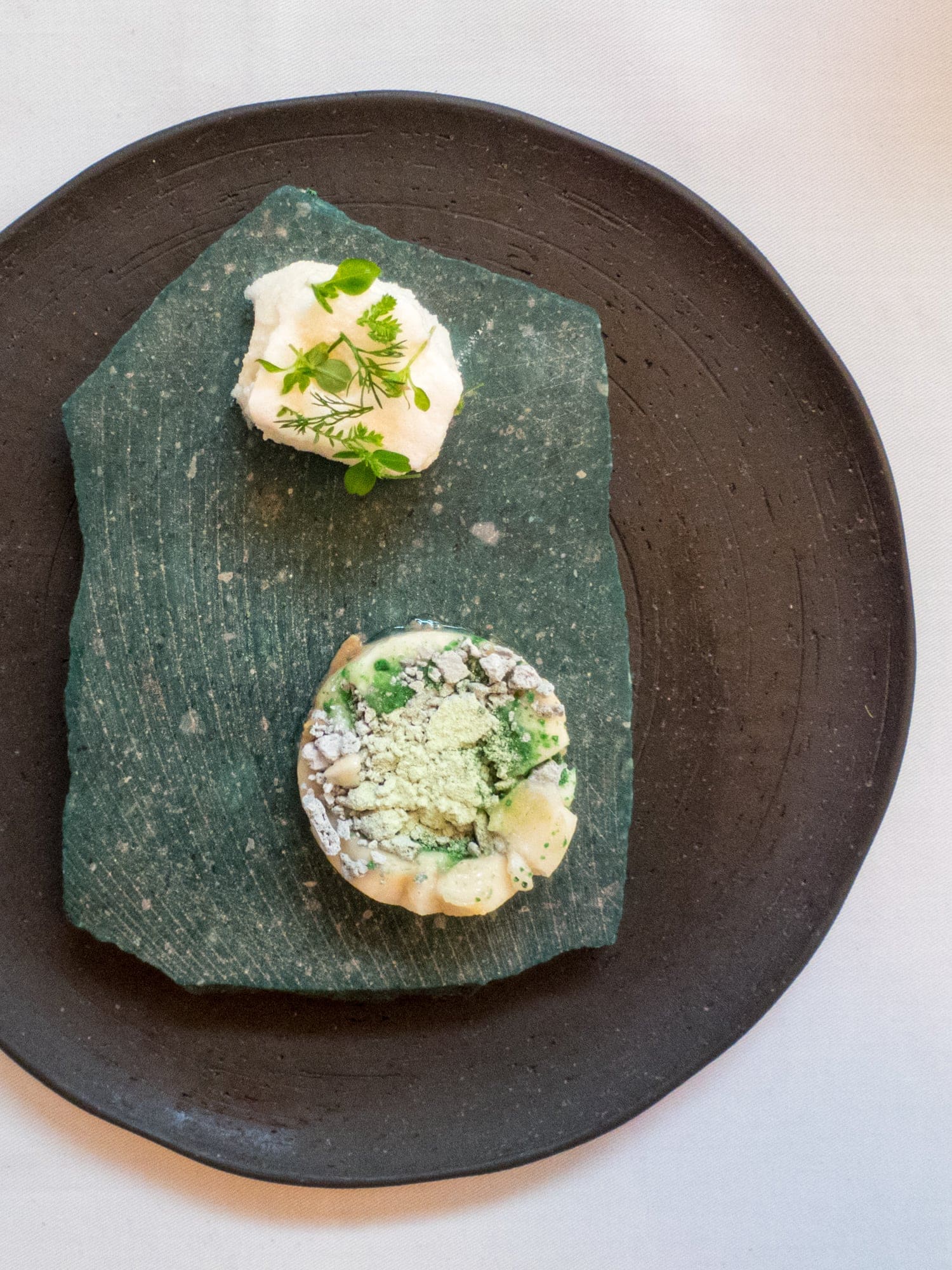In many ways, my experience at Central Restaurante in Lima, Peru, has been one of my life's best and most memorable meals.
Peruvian chefs Virgilio Martinez and his wife Pia Leon's first restaurant reflects their exploration of Peru's diverse ecosystems.
Virgilio Martinez developed the Mater Elevations menu to showcase Peruvian ingredients from the country's three distinct regions:
- Pacific Ocean, coast, and desert
- Andes mountains
- Amazon rainforest

The courses on the tasting menu reflect entire ecosystems at different elevations. Peruvian food is presented on various textured surfaces, including porous coral, solid rock, and custom-made plates.
As a result, moving through the meal, whether you're there for lunch or dinner, evokes travel to various parts of the country.
Central was rated #1 in Latin America by The World's 50 Best Restaurants list for three straight years (2014 to 2016) and again in 2021.
By 2022, Central was rated the #2 restaurant in the world, after Geranium in Copenhagen.
Virgilio Martinez was featured on Season 3 of Chef's Table on Netflix.
Related: World's Best Restaurants
***
I arrived in Peru in October 2011 while traveling through South America.
Traveling by bus, I zigzagged my way through northern and central Peru, stopping in Chachapoyas, Trujillo (the coast), and Huaraz (the Andes) before arriving in Lima.
I quickly became fond of the Peruvian capital, using it as a base to explore more of the country, including Cusco, the Sacred Valley, Salkantay, Machu Picchu, and the Amazon.
During those six months, I became a fan of Peruvian cuisine, which is one of the main reasons I've returned to Lima in subsequent years (2014, 2016, 2018, and 2022).
Related: Best Restaurants in Lima

Mater Elevations Menu at Central
A few months after dining at Eleven Madison Park in New York City, my first three-star Michelin meal, I was back in Lima.
On November 18, 2014, I had lunch at Central Restaurante, and the experience surpassed my dinner at EMP.
The menu and presentations were more colorful and creative, and the ingredients more exotic and unfamiliar.
The dining room was smaller and more intimate. The kitchen, while separate, was visible through windows, and the natural light made photographing dishes easy.
The service was excellent; the dishes were clearly explained in English. I kept the menu as a souvenir and still have it with me today. The cost of it all was significantly less, too.
Lunch at Central began in a unique way, with the "Paita Expedition," a course of frogfish and deepwater algae presented on black coral; it captured an entire ecosystem.
See also: Maido - Intro to Nikkei Cuisine

Up next, a chilled glass of cactus milk and retama flower petals.
The presentation of this dish, especially when viewed from the top-down, is strikingly beautiful.

Tasting menus challenge diners, and I felt that when course three, "Dry Andes," was presented.
The edible grey clay was served on a chilled piece of black rock with ocas, a type of tuber or root vegetable.
I nibbled on the cold clay, sourced in the Andes mountains 3,900 meters above sea level.
It was not unlike the scarlet macaws that feast on clay licks in the Amazon, an activity I'd previously witnessed while visiting the Tambopata National Reserve in southern Peru.



The eighth course at Central Restaurante was a white puffy ball on a black plate. Cutting into the soft exterior revealed a bright slice of fresh clam.

"Cold Cultivation" was the name given to the ninth course, which featured scallops sourced from ten meters below sea level.
The plating was terrific, and I liked the use of negative space, which became a constant midway through the menu.


The use of negative space was no better than in the eleventh course, "Octopus in the Desert."
Visually speaking, this remains one of my all-time favorite dishes. The octopus was tender and perfectly cooked.
Airampo (Opuntia soehrensii) is a cactus that has succulent, spiny, flattened, semi-circular stems and yellow or red flowers.
It grows in the wild in dry valleys, especially in Cusco and Apurimac and some costal valleys, but it can also be found domesticated.
It has pink edible fruits similar to prickly pears. The seed is used to dye drinks, sweets, and fibers in a beautiful magenta color.
Slowfood Foundation for Biodiversity

Peru has approximately 2,000 varieties of potatoes; the Isco potato grows high up in the Andes.
It's hard to believe the diversity of potatoes in Peru, given how few we use in the United States.
Cushuro is a type of blue-green algae. I love the blue plate used for this dish.

Beef heart (anticuchos) is a commonly eaten food in Peru and one that I first tried at the beach in 2011. Much to my surprise, I enjoyed it.
If I hadn't known ahead of time, I wouldn't have guessed the meat I was eating was cow heart. Therefore, it was no surprise to see heart on the menu at Central Restaurante.
Once again, the custom plate, with space for milk, showed the attention given to the presentation.
Desserts


The fifteenth course and second dessert featured was "Coca Leaf Environment," which featured coffee, chirimoya, and mint from 1,750 meters above sea level.
Chirimoya is a green edible fruit native to Peru. In an 1866 newspaper article, Mark Twain referred to chirimoya as "the most delicious fruit known to men."
Once again, I was enamored by the presentation.
The desserts were on a green slab of stone with curved lines that echoed their shapes and the black dish below it.


Last but not least, the "Barks and Resins" dessert reflected ingredients from the Amazon.
The chocolate bark was served on another chilled stone, a trick I couldn't get enough of. They were served along with a solar infusion of cacao.
See also: Best Restaurants in Latin America

After my culinary journey through Peru, I toured Central Restaurante, including their garden and collection of spices and ingredients from around the country.
A few years ago, Central moved from its original location in Miraflores, where I dined, to the neighboring and more bohemian Barranco district of Lima.
Plan Your Visit
Address: Av. Pedro de Osma 301, Barranco, Lima, Peru
Dress: Smart casual
Reservations: Highly recommended
Website: central.com.pe
In 2018, Virgilio Martinez and Pia Leon opened Mil Centro, a restaurant located at the Moray ruins in the Sacred Valley near Cusco.
This was followed by Pia Leon's Kjolle in the same restaurant complex as Central in Lima.
Central remains the flagship restaurant of this husband and wife team and one of the best places in Latin America to explore a country's native ingredients.




